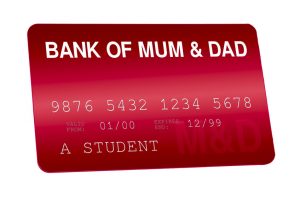Posted on August 16, 2016 at 6:50 am by Nigel Brokenshire
6 Options for the Bank of Mum and Dad

It seems like there is no better time to climb onto the UK property ladder. With the Bank of England dropping the base rate (making mortgage deals cheaper), Brexit putting the ‘skids’ on a rampant property market and the government offering shared ownership schemes. However, many first time buyers are still struggling to save for that much needed deposit and in-turn looking for support.
First-time buyers still need a hefty deposit and if planning to live in London the average deposit is over £90,000. A recent Barclays Bank survey also found that one in three accepted help from their parents.
If parents are planning to provide financial support then here are six options that they can consider
1. Lump Sum
Parents provide a straight cash contribution towards the deposit. So long as its deemed a ‘gift deposit’ and not to be repaid, attracts interest and the parents have no rights to the property, then the lender will be satisfied. Inheritance tax plays a part if the gift goes over the lifetime limit allowed. If you happen to pass away within seven years the deposit may be liable for tax.
2. Family offset mortgages
This is when the lender allows parents to gift a lump sum but place the deposit into a bank account. Then after a certain period of time e.g. 10 years the parents are paid back (so long as their child has not defaulted on the loan). Some banks offer interest on the cash too. Our previous blog on 100% loan describes the Barclays Family Springboard product.
3. Equity Release
For those parents over 55 and are mortgage free, then they can look into releasing equity from their property. What they would do is take out a lifetime mortgage and this would then allow them to have a loan up to 60% value of their property. The loan would not attract interest (it accumulates) but when the parents pass away, or downsize, the house sale would pay the loan off.
4. Joint mortgages
An option is to enter into a joint mortgage where both the parent and child are named on the mortgage agreement and deeds, with both incomes considered for the mortgage amount. Of course, as a parent you are also liable for the mortgage payments and if you own a property already you’d need to pay the 3% stamp duty surcharge.
5. Guarantor Mortgage
If the child has been able to raise the necessary deposit they may still not have a sufficient salary to secure a large enough mortgage. Therefore, the parent’s property can be used as collateral and parent’s income is combined with their child’s income for the mortgage. Guarantor mortgages are complicated and come with many risks so best to get advice.
6. Use ISAs
Parents can open a Junior Isa account and contribute £4,080 per year for each child under 18 years old. For those older, parents can pay into a Help to Buy Isa. Each month they can deposit £200 and when it comes to buying a house they can apply for the government top-up (till 2030) contributing £50 per £200 saved.
We would recommend that before applying for a mortgage you speak to a Financial Advisor. BeeMyMinder can put you in contact with one, so please get in touch.
Hopefully you have found this article insightful. If still getting to grips with mortgages please read our previous mortgage article.

